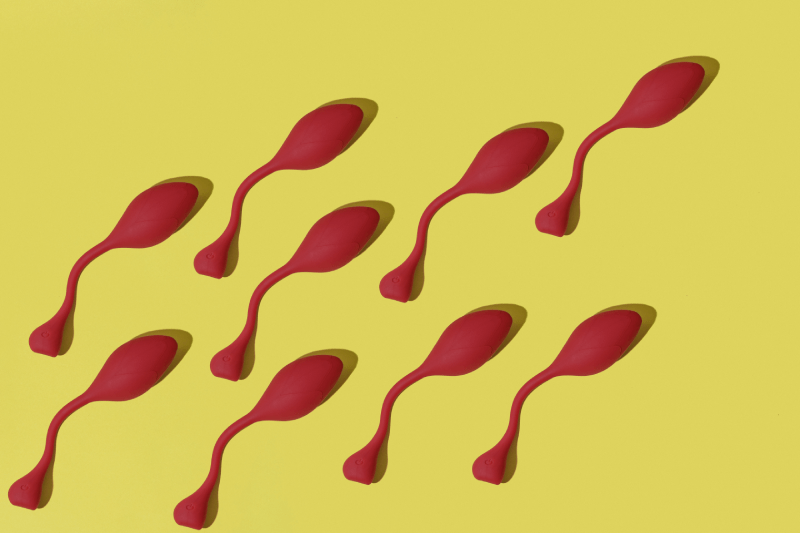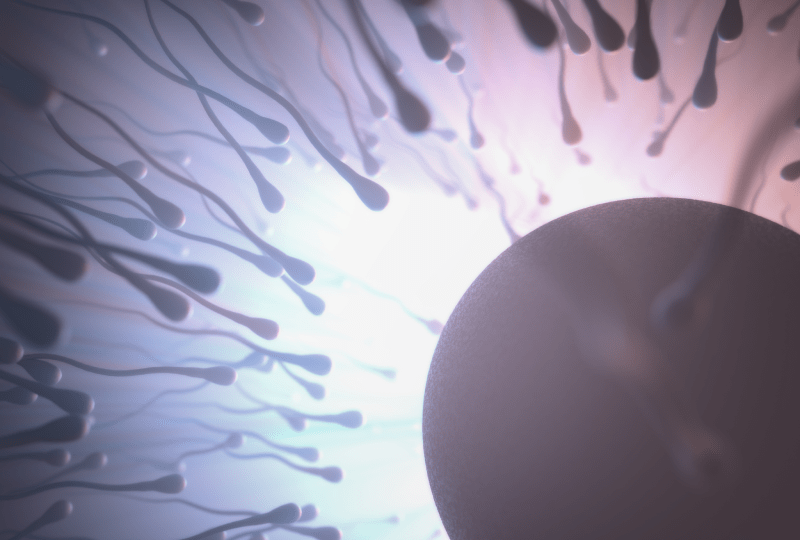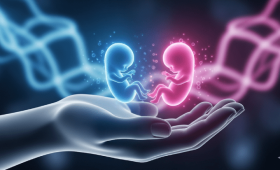What Is The IVF Process And Who Is It Suitable For?
The IVF (In Vitro Fertilization) process is based on the principle of fertilizing eggs with sperm in a laboratory environment outside the woman’s body and transferring the resulting embryo to the prospective mother’s uterus. It is generally suitable for couples with a wide range of infertility issues, including those with blocked fallopian tubes, male factor infertility, unexplained infertility, or failure of other assisted reproductive treatments.
A comprehensive evaluation before starting the treatment is vital for determining the most appropriate treatment protocol for the couple’s specific situation. When considering international treatment options, you can consult the Cure Holiday experts to get information about centers offering personalized protocols and high standards.
What Preparations Are Required Before Starting IVF Treatment?
Before starting the treatment, it is a critical step for both partners to undergo a detailed health check and for the cause of infertility to be definitively identified. For the woman, hormonal tests, a uterine scan (HSG), and ovarian reserve assessment are evaluated, while a detailed sperm analysis is requested for the man.
Additionally, lifestyle adjustments, such as achieving an ideal weight and quitting smoking and alcohol, are important to increase the chances of success. It is essential to remember that the tests and preliminary preparations performed during this process allow the treatment plan to be tailored specifically to the individual. A complete and accurate preparation means taking the first step of treatment solidly.
What Are The Main Factors Affecting Treatment Success?
The success rates of IVF treatment emerge from the complex interaction of many variables. The most important determining factors include the prospective mother’s age, the diagnosis leading to infertility, the quality of the embryo used, and the state of the uterine lining (endometrium) in accepting the embryo.
Furthermore, the individualized nature of the treatment protocol applied, the technical competence of the laboratory, and the experience of the specialist performing the transfer directly affect success. To obtain detailed information about these factors and create the most suitable treatment plan for yourself, you can contact the Cure Holiday support team.
How Long Does IVF Treatment Last And What Are Its Stages?
A typical IVF treatment cycle, excluding the preparation phases, lasts between 15 and 20 days on average. This process fundamentally consists of four main stages: First, medication is administered to stimulate the ovaries and obtain multiple eggs.
The second stage involves the egg retrieval (OPU) procedure. The third stage includes fertilization and embryo development monitoring in the laboratory. Finally, the selected embryo is transferred to the prospective mother’s uterus at the appropriate time. The duration and intensity of each stage may vary slightly depending on the protocol applied.
How Is Ovarian Stimulation Performed?
Ovarian stimulation is a medication regimen aimed at obtaining multiple quality eggs for IVF treatment, in contrast to the single egg development in a natural cycle. Hormone medications (FSH and LH) are administered to the prospective mother, usually through daily injections. These medications encourage follicular development. The size of the follicles and hormone levels are closely monitored with ultrasound and blood tests. The treatment is completed with a final injection, known as the trigger shot, when the eggs reach a size indicating they are ready for retrieval, and the day for the OPU procedure is set.
Is The Egg Retrieval Procedure (Opu) A Painful Procedure?
The egg retrieval procedure is generally performed under light sedation or brief general anesthesia, so the prospective mother does not feel any pain or discomfort. The procedure consists of aspirating the contents of the follicles in the ovaries with the help of a thin needle under vaginal ultrasound guidance and usually lasts 15-30 minutes. Mild cramping or pelvic pain may be felt after the procedure, but this subsides quickly and can be easily managed with prescribed painkillers. This is one of the most critical stages of the IVF process that must be navigated comfortably.

How Is The Sperm Collection Procedure Carried Out?
The sperm collection procedure is typically done on the day of egg retrieval and is most often carried out by masturbation in a sterile environment. This is the standard method, usually preceded by a recommended 2 to 5 days of sexual abstinence. If there are difficulties in obtaining sperm due to male factor infertility (severe oligospermia or azoospermia), surgical methods such as TESE (Testicular Sperm Extraction) or TESA may be used. With surgical methods, tissue is taken from the testicle to search for sperm, and thus the sperm cells necessary for fertilization are obtained.
How Is Fertilization Achieved In The Laboratory Environment?
Fertilization occurs in the laboratory by bringing the collected egg and sperm together. In the classical IVF method, the eggs are placed in the same culture as the prepared sperm cells, and one of the sperm is expected to enter the egg naturally.
However, ICSI (Intracytoplasmic Sperm Injection) is more commonly used today. In this method, the laboratory specialist, under a microscope, directly injects a single selected, healthy sperm cell into the egg cell. This technique significantly increases the success rate, especially in cases of male factor infertility and when sperm count or motility is low.
How Important Is The Embryo Development Monitoring Process?
The embryo development monitoring process is one of the most critical factors determining the success of the treatment. After fertilization occurs, embryos are closely observed in special incubators for 3 to 6 days. During this follow-up, the embryos’ cleavage rate, cell count, and morphology (structure) are evaluated. The highest quality embryos with the greatest implantation potential are selected for transfer at this stage. A good laboratory and meticulous monitoring not only increase the chance of success but also allow the selection of the best embryo to reduce the risk of multiple pregnancies.
When And How Is The Embryo Transfer Performed?
Embryo transfer is usually performed on the third (cleavage stage) or fifth (blastocyst stage) day after fertilization. This procedure is simple, painless for the prospective mother, and does not require anesthesia.
With the guidance of an ultrasound, the selected embryos are gently placed into the pre-prepared area inside the uterus using a very thin and flexible catheter inserted through the vaginal route. The procedure requires great care and sensitivity to capture the most opportune time for the embryo to implant in the uterus. The moment of transfer is the highly anticipated final stage of the entire treatment.
How Many Embryos Are Recommended For Transfer?
The number of embryos to be transferred requires a delicate balance between minimizing the risk of multiple pregnancies and maximizing the chance of pregnancy. Legal regulations and medical guidelines in most countries, as of 2024, generally recommend single embryo transfer (SET). Especially in young patients and situations where high-quality embryos are obtained, single embryo transfer is considered the safest approach for both maternal and fetal health. However, based on the mother’s age, the number of previous attempts, and embryo quality, two embryos may be transferred in some specific circumstances.
What Should Be Considered After The Transfer?
After embryo transfer, the prospective mother is advised to restrict physical activity for a few days, but absolute bed rest is definitely not necessary. Light daily activities can be performed. Most importantly, the prescribed medications, such as progesterone supplementation, must be used regularly and correctly, as these drugs support the embryo’s implantation into the uterus. Avoiding stress, eating healthy, and abstaining from sexual intercourse for a certain period are also key points to consider during this process. This two-week waiting period is a critical time that also needs to be managed psychologically.
How Long Is The Time To Learn The Treatment Result (Beta HCG)?
The result of the IVF treatment is learned by measuring the Beta hCG (Human Chorionic Gonadotropin) hormone in the blood approximately 10 to 14 days after embryo transfer. This hormone is a marker indicating the start of pregnancy. This waiting period is known as the “two-week wait” and is an emotionally intense time for couples. It is the best approach to patiently await this period after the transfer and confirm the result with a blood test rather than a urine test. A positive result means the treatment has been successful, and pregnancy monitoring is initiated.
When Can A New Treatment Be Started After An Unsuccessful Attempt?
After an unsuccessful IVF attempt, it is important to allow some time for couples to recover physically and emotionally. Generally, the woman’s menstrual cycle is expected to return to normal, which means taking a break of one or two months before starting a new treatment cycle. This interval is also an opportunity to analyze why the treatment failed and to make the necessary adjustments to the new protocol. To receive expert support and plan the most accurate timing during this process, you can contact Cure Holiday to benefit from personalized consultation services.
What Are The Advantages Of Frozen Embryo Transfer (Fet)?
Frozen Embryo Transfer (FET) allows embryos that were left over from a fresh cycle and successfully frozen to be transferred in a subsequent cycle. The main advantages include providing a more natural uterine environment, free from the effects of the prospective mother’s high hormone levels due to ovarian stimulation. It also offers a chance for a rapid new attempt after an unsuccessful fresh cycle and lowers medication costs. This method is often preferred to increase success, especially in patients with a high risk of OHSS or in cases where the uterine lining was insufficient in the fresh cycle.
What Are The Possible Side Effects During IVF Treatment?
Due to the hormone medications used during IVF treatment, some side effects may occur. The most common side effects include mild abdominal bloating, breast tenderness, headaches, and emotional fluctuations. In the process of ovarian stimulation, there is a rare risk of a more serious condition called Ovarian Hyperstimulation Syndrome (OHSS). However, modern treatment protocols have minimized these risks. The vast majority of side effects are temporary and resolve on their own shortly after the medication treatment is completed.
What Is Ovarian Hyperstimulation Syndrome (Ohss) And How Is It Prevented?
Ovarian Hyperstimulation Syndrome (OHSS) is a condition that arises when the ovaries overreact to ovarian stimulation treatment. The ovaries swell and can cause fluid accumulation in the abdominal cavity, leading to symptoms such as abdominal pain, bloating, and nausea. With modern medical approaches, the risk of OHSS has been largely controlled. Personalized planning of the treatment protocol, the use of low-dose medication, and especially the use of different drugs instead of hCG as the trigger shot (agonist trigger) are the main preventive methods that minimize the risk of OHSS.
What Assisted Reproductive Techniques Are Used For Male Infertility?
In cases of male infertility, different assisted reproductive techniques are used depending on whether the sperm count, motility, or morphology is insufficient. Intracytoplasmic Sperm Injection (ICSI) is the most commonly used method with high success rates, as a single sperm is directly injected into the egg. In severe sperm problems, surgical methods such as TESE or TESA are applied to retrieve sperm. These techniques significantly increase the chance of fatherhood even in challenging situations like azoospermia (absence of sperm in semen).

What Is The Effect Of Age Factor On Treatment Success?
The prospective mother’s age is the most critical and determining factor affecting the success rate of IVF treatment. As a woman ages, especially after the age of 35, the number of eggs decreases, and the quality and genetic structure of the remaining eggs begin to deteriorate. This situation directly reduces embryo quality and thus the chance of pregnancy, while increasing the risk of miscarriage. Although success rates tend to decrease in women aged 40 and over, successful outcomes are still possible in this age group with personalized treatment protocols and genetic screening methods.
What Should Be The Nutrition And Lifestyle During IVF Treatment?
Healthy and balanced nutrition plays an important role in supporting the chance of success during the treatment process. The Mediterranean-type diet (plenty of vegetables, fruits, whole grains, healthy fats), which is rich in antioxidants, is generally recommended. Processed foods, excessive sugar, and caffeine should be avoided. At the same time, regular and light exercise is recommended to maintain ideal weight and reduce stress. Taking supplements like folic acid under expert recommendation, especially before and during treatment, is important for preparing for pregnancy.
What Is The Effect Of Smoking And Alcohol Use On Treatment?
Smoking and alcohol use absolutely have negative effects on fertility in both women and men and seriously reduce the success chance of IVF. Smoking reduces egg and sperm quality, impairs the uterine lining’s ability to accept the embryo, and increases the risk of miscarriage. Alcohol similarly harms reproductive health. Therefore, completely quitting smoking and alcohol use for at least a few months before starting IVF treatment is an indispensable rule for maximizing the likelihood of treatment success.
Why Is Psychological Support Important In The IVF Process?
The IVF process can be challenging both physically and emotionally and can create intense stress, anxiety, and even depression for couples. Receiving psychological support helps the couple cope with this intense emotional load, maintain their motivation for treatment, and face possible failures in a healthier way. Reducing stress can indirectly and positively affect the course of the treatment and its success rates. Protecting your mental health on this difficult journey is as important as physical preparation.
What Are The Reasons For Recurrent Unsuccessful IVF Attempts?
Recurrent implantation failure is usually caused by genetic or chromosomal problems with embryo quality or structural or functional problems with the uterine lining (endometrium). Polyps, fibroids, or adhesions in the uterus can prevent implantation, while the thickness or receptivity of the uterine lining is also critically important. Additionally, immune system issues or clotting disorders can rarely lead to failure. In-depth investigation of these conditions and addressing them with personalized additional treatments increases the chance of success in subsequent attempts.
To Whom Are Genetic Diagnosis Methods (Pgt) Applied?
Preimplantation Genetic Testing (PGT) is a method that allows embryos to be tested for genetic diseases or chromosomal abnormalities before being transferred to the uterus. PGT is applied to those with recurrent unsuccessful IVF attempts, prospective mothers in the advanced age group, couples with recurrent miscarriages, and couples with known genetic diseases (such as cystic fibrosis). This method aims to increase the selection rate of a healthy embryo, reduce the risk of miscarriage, and increase the chance of a live birth.
What Medications Are Used In IVF Treatment?
The medications used in IVF treatment are fundamentally grouped into three main categories. The first group includes gonadotropins (FSH, LH) used for ovarian stimulation. The second group consists of agonist or antagonist drugs used to prevent premature ovulation. Finally, the “trigger shot” is used to ensure the eggs mature and to determine the time of egg retrieval. The purpose of all these medications is to obtain multiple eggs in a controlled manner and optimize the timing of egg retrieval. Progesterone supplements are also used after transfer to support the uterus.
What Should Be Considered Regarding Medication Use During Treatment?
Medication use during treatment must strictly comply with the doctor’s instructions. The dosage, time, and method of administration (mostly subcutaneous injection) of the medications must be meticulously followed. Adherence to the rule for medications that need to be stored in the cold chain is very important for their effectiveness. In case of any side effects or missed doses, the medical support team should be contacted immediately. The success of the treatment is strictly dependent on correct and regular medication use.
What Is The IVF Success Rate In Cases Of Unexplained Infertility?
Unexplained infertility is a situation where pregnancy does not occur despite all test results of the couple being normal. In these cases, IVF treatment generally offers a higher chance of success compared to first-line treatments because the fertilization process is controlled by bringing the egg and sperm together in the laboratory. Although success rates depend on other factors like age, IVF often stands out as an effective solution in these situations due to the advantage of directly observing embryo development.
What Is The Risk Of Single Egg And Multiple Pregnancies?
The risk of multiple pregnancies is higher in IVF treatment compared to natural pregnancies, but the main reason for this risk is transferring more than one embryo. Today, thanks to legal regulations and medical preferences encouraging single embryo transfer, the rates of multiple pregnancies (twins, triplets, etc.) have significantly decreased. The risk of identical twins arises from the embryo spontaneously splitting into two inside the uterus, and this risk is only slightly higher than in natural pregnancies.
Are IVF Babies Different From Naturally Conceived Babies?
Scientific research shows that there is no significant difference in long-term health, mental, and physical development between babies born through the IVF method and those conceived naturally. The IVF method only ensures that the fertilization process takes place in a laboratory environment; the baby’s genetic structure and development are the same as natural processes. Although minor differences may rarely be observed in some babies due to the underlying infertility causes for which IVF was applied, they generally show healthy development.
Is It Possible To Get Information About Treatment Costs And Payment Options?
IVF treatment costs vary significantly depending on the protocol applied, medication doses, use of additional techniques (ICSI, PGT, etc.), and the country. The treatment price is offered as a package that covers all stages, including the initial evaluation, medications, egg retrieval, laboratory procedures, and embryo transfer. To obtain detailed and up-to-date information that suits your budget regarding different payment options and international treatment packages, contacting Cure Holiday will be the right starting point.
What Are The Advantages Of Receiving IVF Treatment Abroad?
Receiving IVF treatment abroad can have significant advantages. Some countries may offer more affordable packages, more flexible use of certain genetic techniques (PGT), or shorter waiting times. Furthermore, access to advanced laboratory techniques or procedures that are not legally possible in your home country, such as donation, can also be an advantage. However, it is necessary to choose centers with high reliability and international accreditation and to organize the entire process correctly. Cure Holiday is here to guide you through this organizational process.
What Are The Ethical And Legal Issues In IVF Treatment?
IVF treatment is subject to ethical and legal regulations that differ by country, particularly concerning issues such as embryo freezing duration, the number of embryos, donation, and surrogacy. For example, while donation is prohibited in some countries, it is allowed in others. Couples are required to sign informed consent forms before starting treatment, which cover topics such as the status of frozen embryos, the legal storage period, and what will happen in case of a potential separation. The adherence of every stage of the treatment to legal requirements is essential for the safety of the process.

What Is The Difference Between Preimplantation Genetic Screening (Pgs) And Diagnosis (Pgd)?
Although the terms Preimplantation Genetic Screening (PGS) and Preimplantation Genetic Diagnosis (PGD) are generally referred to as PGT today, their purposes differ. PGT-A (formerly PGS) screens whether the number of chromosomes in the embryo is normal (aneuploidy). This is particularly important in cases of advanced maternal age and recurrent miscarriage. PGT-M (formerly PGD), on the other hand, specifically focuses on diagnosing whether the embryo carries the couple’s known single-gene diseases (e.g., thalassemia). Both methods play a critical role in selecting a healthy embryo for transfer.
What Methods Are Used To Increase Embryo Implantation In The Uterus?
Various additional methods can be used to increase the embryo’s attachment (implantation) to the uterus. One of these is applying special medication protocols (progesterone support) that play a role in preparing the uterine lining. Another is the Assisted Hatching method, applied to thin the outer membrane of the embryo. Additionally, approaches such as addressing structural problems inside the uterus (polyps, fibroids) before the transfer or administering special fluids to support the uterine lining are also options evaluated to increase success.
What Should Be Done For A Healthy Pregnancy After IVF Treatment?
After pregnancy is achieved through IVF treatment, standard pregnancy follow-up and recommendations must be followed for a healthy gestation period. The progesterone supplements prescribed by the doctor should continue to be used for a certain period initially. The prospective mother must strictly avoid cigarettes, alcohol, and other potentially harmful substances, maintain a balanced diet, and engage in appropriate exercise with the doctor’s approval. The first three months of pregnancy require special attention, and regular ultrasound checks should not be neglected.



